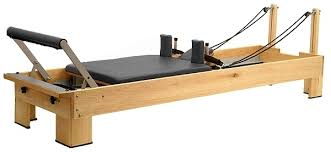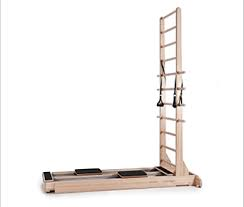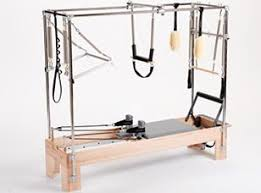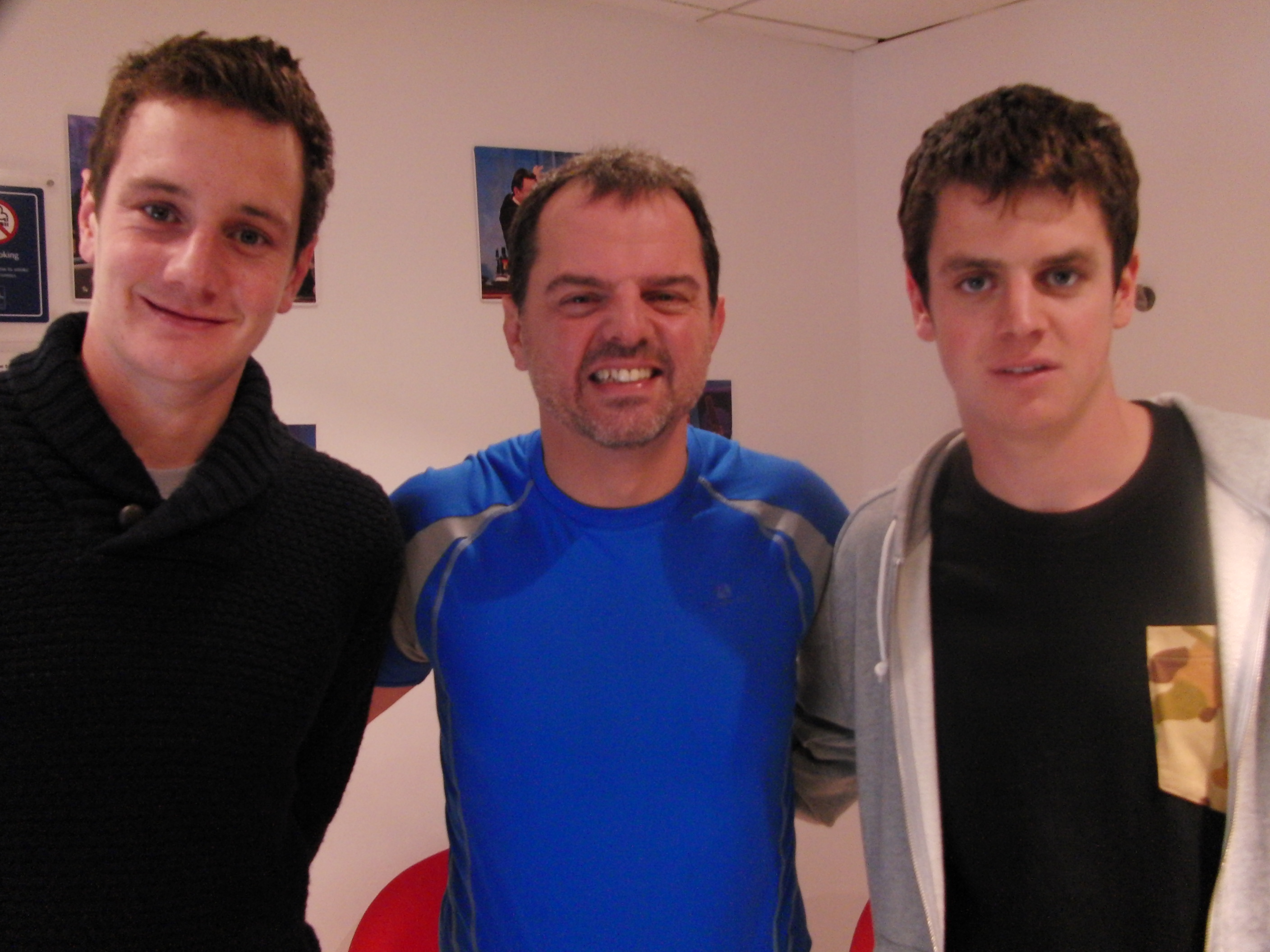For more information please call the studio on 01245 690 648
Studio Reformer

What Is a Pilates Reformer?
Invented by Pilates founder Joseph Pilates, the reformer is a bed-like frame with a flat platform on it, called the carriage, which rolls back and forth on wheels within the frame. The carriage is attached to one end of the reformer by a set of springs. The springs provide choices of differing levels of resistance as the carriage is pushed or pulled along the frame. The carriage has shoulder blocks on it that keep a practitioner from sliding off the end of the reformer as they push or pull the carriage.
At the spring end of the reformer, there is an adjustable bar called a footbar. The footbar can be used by the feet or hands as a practitioner moves the carriage. The reformer also has long straps with handles on them that are attached to the top end of the frame.
They can be pulled with legs or arms to move the carriage as well. Body weight and resistance of the springs are what make the carriage more or less difficult to move. Reformers parts are adjustable for differing body sizes and differing levels of skill.
How Is a Reformer Used?
One of the best things about the reformer is its versatility. Exercises can be done lying down, sitting, standing, pulling the straps, pushing the footbar, perched on the footbar, perched on the shoulder blocks, with additional equipment, upside down, sideways and all kinds of variations. In other words, the reformer can train many parts and dynamics of the body in so many different ways with just one relatively sleek piece of equipment.
All kinds of exercises are done on the reformer to promote length, strength, flexibility, and balance. Most Pilates reformer exercises have to do with pushing or pulling the carriage or holding the carriage steady during an exercise as it is pulled on by the springs.
CoreAlign
 Easy-to-learn exercises on the CoreAlign emphasize an upright posture and are designed to improve posture, balance and functional movement. CoreAlign exercises facilitate musculoskeletal rehabilitation by stimulating core stability muscles to fire in perfect timing while performing challenging exercises, very deep stretches and core-controlled aerobic training. Also great for performance enhancement and as a regular exercise regimen for a healthy lifestyle.
Easy-to-learn exercises on the CoreAlign emphasize an upright posture and are designed to improve posture, balance and functional movement. CoreAlign exercises facilitate musculoskeletal rehabilitation by stimulating core stability muscles to fire in perfect timing while performing challenging exercises, very deep stretches and core-controlled aerobic training. Also great for performance enhancement and as a regular exercise regimen for a healthy lifestyle.
The CoreAlign’s frame encloses two tracks and carts, which move independently with smooth resistance (or assistance) created by six elastic resistance tube assemblies on each cart. Resistance/assistance is possible in one or both directions. Extraordinary versatility – hundreds of functional movement exercises!
Claire Webster (of The Rivermead Osteopaths) said recently “I had a go on Stewart Heath’s (of Bodysense UK Ltd) new CoreAlign machine two days ago. Really great! Legs aching today, but in a positive way. Great addition to Stewart’s Pilates repertoire. This could form an integral part of staying strong, improving posture, and avoiding aches and pains (after the first couple of days!).”
Cadillac (Trapeze Table)

There are so many elements to the Cadillac machine: leg springs, arm springs, fluffy loops to hang from, a push-through bar to stretch you out, and even a trapeze.
You can isolate almost every muscle group on the machine. It’s an excellent piece of equipment tool for breaking down motion into small pieces to restore correct motion patterns. Using the leg springs is one of the best ways to get runners to fully use their hamstrings. Because the Cadillac is such a large piece of equipment it is rarely used in group classes. So the best way to experience this machine is in a private Pilates session.
The Pilates Cadillac is an extremely vestal piece of Pilates Equipment and like all other pieces of Pilates equipment can be used to progress and regress movement in order to address the functional needs of the of the advanced as well as the beginner Pilates enthusiast.






